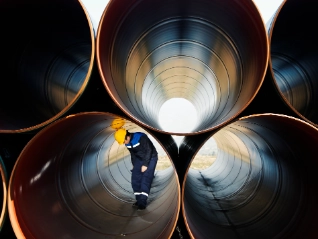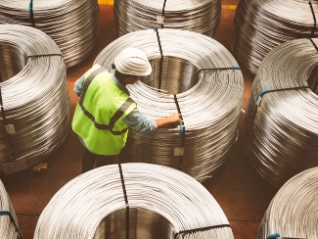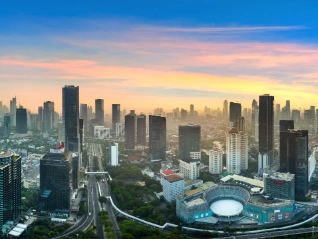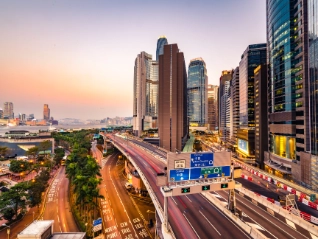
Publications
Reports and whitepapers from our industry experts

News
Latest news and insights

Blogs
Latest blogs

Resources
Helpful guides at your fingertips

FAQs
Your questions answered

Case studies
Examples of high quality credit management processes and practices

Testimonials
Success stories from our diverse range of clients
Report
Industry Trends Electronics ICT November 2024
Electronics/ICT continues to be one of the fastest growing sectors in 2024-2026.


Report
Regional Economic Outlook Emerging Asia - November 2024
The world's economic powerhouse is coping with ageing and a worsening global trade environment.

Report
Industry Trends Automotive November 2024
A rebound is on the cards, while trade frictions affect the electric vehicle segment.

Report
How are the European and US chemicals industries diverging?
The global chemical industry has reached a crossroads, with Europe facing major challenges

Report
Regional Economic Outlook Latin America - September 2025
Latin America's economic growth is structurally low. Fostering investment could help reverse this.

Report
US elections October 2024
Which direction will the US trade winds blow?

Report
Machines and Engineering Industry Trends June 2024
Contractions continue in Europe and the US, but a 2025 rebound is on the cards
Load more
Viewing 7 out of 144
Resource
Letters of credit
Letters of credit are bank guarantees to pay a seller (usually an exporter) for goods or services that the seller has shipped to a buyer (usually an importer).


Resource
Early detection of default risks
Insolvencies often happen when an important business partner folds. Particularly small and medium-sized enterprises with capital ratios of less than 20% can fall victim to this domino effect.

Resource
How to do a risk assessment of your accounts receivable
Your company's accounts receivable is an important indicator for assessing business health.

Resource
Dealing with late payment excuses
Unfortunately some businesses make up excuses to explain away delays in settling invoices. Here are some examples of the more common excuses and tips on how to best deal with them.

Resource
Ten tips to get your customers to pay on time
The secret to prompt payment lays in a systematic and consistent approach to credit management.

Resource
The cultural advantage
Read about the importance of culture within international business and the possible dangers if it is not considered.

Resource
Improving cooperation between credit managers and sales
One customer, diverging interests? Managing credit successfully in a sales-driven environment.
Load more
Viewing 7 out of 12
Frequently Asked Questions about credit insurance, how it works and how it can benefit your business.
- What is trade credit insurance?
- What is credit risk?
- Why credit management is important?
- What is business insurance?
- SME Insurance Singapore
- What is debt recovery?
- What is export credit insurance?
- What is political risk insurance?
- How much does credit insurance cost?
- How can I reduce DSO?
- How can I insure my export trade credit?
- How do you know if a business is failing?
- Why do traders take out credit insurance?
Case Study
Park Polymers: Credit Insurance for Risk Management and Growth


Case Study
EnCom Polymers: credit management for chemicals sector
With the backing of Atradius’s resources, EnCom Polymers has been able to expand business with existing customers and go after new business they previously would have shied away from.

Case Study
BVV GmbH: credit management for steel processing
BVV GmbH grew internationally and recognised risks such as companies on the brink of insolvency in plenty of time to mitigate the risks.

Case Study
Vinci Construction: credit management for the construction sector
Atradius Surety has enabled Vinci Construction France to expand their sources of finance beyond their banking partners. This partnership with Atradius benefits Vinci Construction by providing substantial flexibility, excellent responsiveness and a capacity for innovation.

Case Study
Continental Banden: credit management for the automotive parts sector
How we are part of Continental Banden Groep B.V.'s business process, minimising risk and supporting sales

Case Study
Metalco Inc.: Driving new business with quick communication
Ben Green, President and Owner at Metalco Incorporated in Chicago, Illinois, explains how Atradius Trade Credit Insurance has helped him secure new business confidently.

Case Study
L'Oreal: credit management for the beauty sector
As a successful business, L’Oréal Hong Kong wanted a partner that could help protect their regional interests and support their focus on further growth.
Testimonial
Omron - electric machinery sector
Omron has achieved sustainable growth while navigating the uncertainties of China-US trade relations and regional manufacturing transformation.


Testimonial
Ferm - machines sector
FERM (International) offers competitive payment terms and limits their credit risk to developing countries by using Atradius Dutch State Business (DSB) and the DGGF.

Testimonial
El Ganso - retail fashion sector
El Ganso credits our support in helping the fashion brand grow from a domestic-focused Spanish startup to a successful international business.

Testimonial
Janson Bridging - infrastructure sector
Janson Bridging (International) uses export credit insurance from Atradius Dutch State Business (DSB) to offer favourable credit terms to customers located in emerging markets.

Testimonial
KMOdynamoo - marketing sector
Late payers prompted content marketing agency KMOdynamoo to take out an Atradius credit insurance policy and has resulted in better debtor management.

Testimonial
Calidad Pascual - beverages sector
Calidad Pascual partners with international credit insurance firm Crédito y Caución Atradius to gain additional knowledge of international markets.

Testimonial
Brook Green Supply - energy supply sector
By providing open dialogue, insight and valuable credit information we helped Brook Green Supply improve their internal credit risk management systems.
Load more
Viewing 7 out of 9
Case study
Metalco Inc.: Driving new business with quick communication
Ben Green, President and Owner at Metalco Incorporated in Chicago, Illinois, explains how Atradius Trade Credit Insurance has helped him secure new business confidently.
Explore
Tools
Insights to elevate your strategic growth



































